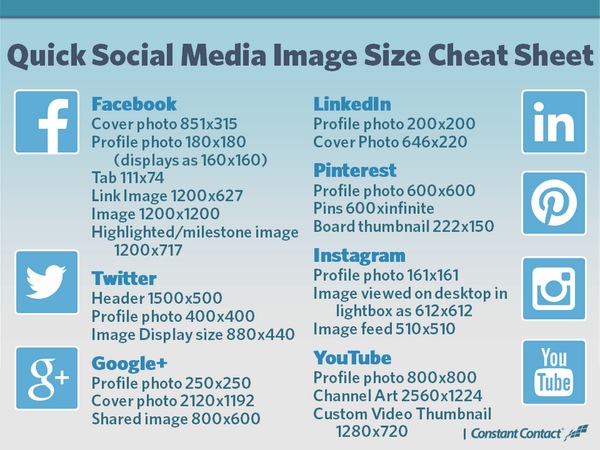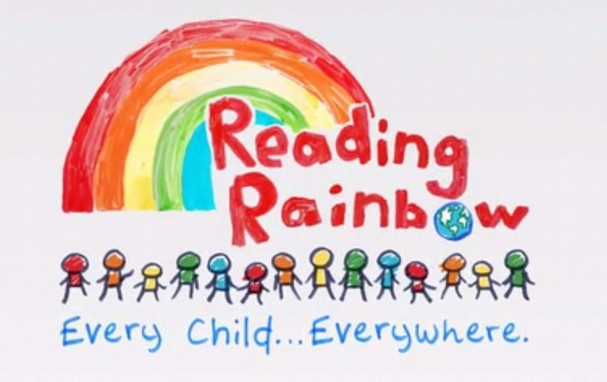Why Doesn’t Everyone Use the Incoterms® Rule DDP? Incoterms®, EXW, DDP
The Choice of Incoterms® Determines the Seller's Responsibilities
U.S. exporters must prevent their products from entering into a counties or markets which are prohibited by U.S. laws, or into the wrong hands for use of the product in a detrimental way. Exporters need to know and have trust in the purchaser.
At a recent workshop on Incoterms®, I prepared my usual outline, using the technique of ranking the Incoterms® from least responsibility for the seller to most responsibility for the seller. Initially, exporters like the term with least responsibility for them, Ex Works. In laymen’s terms, the seller says, “The goods are at my back door, come and get them.” As the workshop develops, exporters learn that Ex Works has risks, one being diversion into the wrong hands..
The Transaction may Determine the Choice of the Incoterms® Rule
A company in Colorado sent two employees to my workshop at the Rocky Mountain World Trade Center Institute. They dutifully took notes but made very few, if any, comments during the course of the class, until we got to the last Incoterm®, DDP (Delivered Duty Paid). Then one of them made a simple statement, “I don’t understand why everyone doesn’t use DDP.”
I responded, “Sir, with that comment, I know you understand Incoterms®.”
The DDP term places full responsibility on the exporter and very little on the importer. The exporter must jump through all the hoops and over all the hurdles including transportation and insurance to the buyer’s facility. This Incoterm® requires the seller to arrange for customs clearance on the buyer’s side.
Why the Incoterms® Rule DDP Was the Exporter's Preference
Why was this important to this company? They manufacture computer products that have the potential for misuse if the goods find their way into the wrong hands. Exporters need assurance that their products arrive at the intended destination and are only used for the purpose intended. By using DDP, the seller has complete control of the shipment to its destination and can avoid the possibility of diversion to unwanted parties or countries.
Why You Should Hire Stakeholders, Not Employees
Let's retire the idea of an employee. These days, your company needs something different.
The Factory System gave us cool toys and a cushy life, but it also came with business diseases, and one of them is the Industrial Age concept of the employee. That version is a very new idea in the history of man, and one that needs to go away. Let's replace them with Stakeholders.
 Employees Are Silent
Employees Are Silent
The Industrial Age recreated people as extensions of machines. If people left the messy, creative human part at home, they fit into the Factory System much better. Sadly, people adapted, to the point that the generation that entered the work force at the very peak of the Industrial Age (1945-1965ish) was given the worst generational label in history--The Silent Generation. They understood the Factory System mantra, "Be loyal to the company. Do what you're told. Show up early, leave late. Shut up, sit down, don't make waves, live invisibly, and go out quietly. The company will take care of you, from cradle to grave." They bought the promise hook, line and sinker.
Employees Are Children
This view of work (and life) turned adults back into children. The most respected person was one who obediently took orders, did what they were told, didn't question authority, was blindly loyal to those in charge, and lived passively as others directed their life. Pretty much what we want a five-year-old to do.
To keep the children from ruining the house, the Industrial Age herded people into company day care centers, penned them in with clear and narrow rules on performance and hours, and endless limitations on being human and adult at work. Machines didn't need them to ask why, or to create, or to solve problems. Machines just needed them to "do".
Childlike Employees Are Replaced By Adult Stakeholders
The notion of an employee is a business disease which turns people back into children, and it should be eradicated. Some companies can't even use the word anymore. They don't want to hire children who need to be supervised so that they don't run into the street. They want adults. Enter the Stakeholder.
Stakeholders bring the whole, messy, creative person to work. They can think, take initiative, make decisions, carry responsibility, take ownership, be creative, and solve problems. And they incessantly ask the most human of questions, "Why?" They are self-directed and creative, and they solve problems. They don't expect the company or other adults to take care of them.
Stakeholders Are Owners
Ownership is the most powerful motivator in business. Adults own stuff. Even if they don't own a piece of the company, Stakeholders own their work. And as Stakeholders, they receive profit sharing, just like an owner should. To create ownership, Stakeholders in Participation Age companies own some of the fruit of their labor.
Stakeholders Require Leadership, Not Adult Supervision (Management)
If you hire adult Stakeholders instead of childlike employees, it changes the way you lead people. Participation Age companies with Stakeholders don't have office hours, vacation time, or personal days. They're not interested in whose car was in the parking lot first or who left last. In these companies, Stakeholders don't need adult supervision, they need leadership.
Stakeholders Make Meaning and Money At Work, and More of Both
Industrial Age employees traded time for money, and then went home to Make Meaning. Stakeholders won't settle for a j-o-b that just pays the bills. They want to be able to go home at the end of the day knowing they made a difference, not just a product. And everyone is a lot happier because they all work with adults who contribute and pull their own weight.
In the Participation Age, employees are always a bad idea. Stakeholders will replace them. There is a growing wave of companies looking to replace employees with Stakeholders. Don't settle. Find one you can join, or build one yourself.
Come join us in the Participation Age.
by Chuck Blakeman, Author of the #1 Rated Business Book of the Year, Making Money is Killing Your Business and Top 10 business book, Why Employees Are Always A Bad Idea
Article as seen on Inc.com
Disputable Nutrition
Much has been made of the new nutrition requirements associated with the National School Lunch Program which has been in place for two years now. A search of stories and blog posts show musings and manifestos from parents and teachers who have seen pounds upon pounds of food thrown out by students who are required to take certain portions (fruits or vegetables) but won't eat it. Some school officials have pointed to the problem as a source of extreme and unnecessary waste.
The underlying problem may be nutrition requirements so specific, that cafeteria kitchens can only meet them with bland, tasteless food results. Which, no matter how you slice it, does no good at all.
It's unclear whether that's the reason one Colorado school district is opting out of the national program, regardless of the financial incentive to participate. Weeks before the start of the 2014-2015 school year, the Douglas County School District's board approved a decision to allow the districts nine high schools to drop out of the program. Students who qualify for free or reduced cost school lunches can still participate in the program, but the school district will not be reimbursed by the federal government.
The district's figures show that about 6 percent of their students qualify, and the loss in reimbursement would about to $167,000.
"We're prepared to absorb those costs," said Brent Craig, the district's director of nutrition services. "We're unique in that way. If I was managing a district with a higher number of free or reduced lunch students, I couldn't do it."
Delving deeper, the decision seems to be the result of examining what goes into meeting the NSLP requirements. In one case, the district's chef managed to get a variation of pizza to the recommended 350 calories, but only by replacing the natural cheese with modified food starch, yet it exceeded the maximum allowance of 480 mg sodium. Students didn't like the pizza, but another option, healthier than commercial pizza was well-liked. And that's what the school district would prefer investing their resources in, and ultimately feed to students.
To read more about this decision as well as the NSLP requirements, check out this story from the Denver Post or examine the Nutrition Standards.
The Disappearance of the Entry Level Job
The first job out of college is a huge learning experience that can set the tone for an individual's future. That first taste of employment can give a first timer the determination and drive to move up in a company, while creating a safe environment to learn the basics of a trade. This first time experience is crucial for developing the confidence in an employee to succeed in their future with the company. Unfortunately for recent job-seeking grads, the business climate of today may not be as open as it once was.
No mom, I want to be an Art Major! Idiot...
Those seeking entry level jobs, jobs designed to ease an employee into the responsibilities of the position, are finding themselves under-qualified for even the starter positions. These job-seekers are finding that "entry level jobs" are requiring more and more advanced and industry specific skill-sets. Entry level jobs in finance and accounting particularly have evolved from simple data entry jobs that bring an employee up to speed over time, to requiring advanced data analysis and a professional understanding right away. No longer do these new hires have weeks to acclimate, but more often than not have orientation day one and expect full competency day two.
In addition to your data entry, you're also responsible for growing the money tree.
The change has been so rapid, that many universities are struggling to acclimate by offering the best available solution to their students in the form of internships. In order to gain the necessary experience to fulfill the requirements, students are taking to internships to supplement their educations and it seems to be helping close the gap. However, this solution only works for those able to attend college, and even then there aren't enough internship opportunities for all students interested.
First one there gets the spot, the rest of you are cleaning toilets! READY, GO!
Analysts are unsure what is causing this trend, with some citing automation in the workforce, some citing the changing economy and some say it may be due to over-competition for available spots. Whatever the cause, the fact of the matter is that the definition of an entry level job is changing, and anyone looking to enter the workforce better be prepared for that.
For more on this topic, visit the original post here.
Connect & Collaborate - Sex Trafficking Awareness
The most horrific crimes, involving women and children are being committed under a cover of normalcy and ignorance. Human trafficking and sex trafficking victims are exploited and abused here in Denver and very few of us will ever notice. It takes place within a dirty game of manipulation, where victims pose as the girlfriends of their abusers. An incredibly organized structure pits women against women. Many "someones" are making loads of filthy, tainted money from the abuse and tears of the innocent. Denver's position at the intersection of two major interstate highways makes it a major hub for sex trafficking. Victims are found and made within a day or two of a teenager running away from home, or the moment a parent coerces their own child to perform sex acts for money, just this one time. They're hidden in plain sight, where hotels, massage businesses, even restaurants and nail salons serve as fronts for sex trafficking rings.
 This week, Denver District Attorney Mitch Morrissey returns to Connect & Collaborate to discuss the troubling problem of sex trafficking, the challenges of prosecuting the criminals and assisting the victims. He introduces us to Becky Bullard, Project Director for the Denver Anti-Trafficking Alliance (DATA) who explains the complications of removing victims from their captors and exploiters.
This week, Denver District Attorney Mitch Morrissey returns to Connect & Collaborate to discuss the troubling problem of sex trafficking, the challenges of prosecuting the criminals and assisting the victims. He introduces us to Becky Bullard, Project Director for the Denver Anti-Trafficking Alliance (DATA) who explains the complications of removing victims from their captors and exploiters.
It's an uncomfortable topic, for certain. We at ICOSA hope that by listening to this interview, our audience will be better able to identify these kinds of situations, and report suspicious circumstances to save a life or simply release a child from this horror. DATA does not suggest any citizen take these situations into their own hands, or confront the abusers. If you see something suspicious, contact the National Human Trafficking Hotline. 
Training is available for businesses and organizations that may confront the effects of trafficking, such as school teachers, truck drivers, or anyone who works with children. To request training, go to www.DenverAlliance.org and click on Resources.
We thank you for taking this information seriously, and for your heart to make our community safer for everyone.
To learn more, listen Saturday at 1:00PM on KNUS 710 – Please let us know what you think of our program, either by commenting here or on Facebook at Connect & Collaborate with ICOSA or join the discussion on Twitter @ICOSAMagazine.
Math Methods and Madness
I admit that I'm part of the problem. I'm lousy at math. Like many Americans, I can calculate basic equations (though it probably takes me longer than most) and do so accurately. But if I tried to solve problems that kids are given in school today, I would surely pull my hair out before getting any where close to a correct answer.
It's possible the reason American students are so far behind in math on a global scale, is because our school systems frequently change the methods, and then change them again. Worse yet, the methods or standards can change without enough investment in teaching the teacher to teach the new methods. That's according to a rather comprehensive, recent article from the New York Times; Why Do Americans Stink at Math? by Elizabeth Green.
It's a lengthy article, but worth the read for it's insights, which I'll share, in part, here.
Author Elizabeth Green uncovers the problems with American Mathematics pedagogy by following the teaching career of Akihiko Takahashi from Tokoyo. As a University student, he met the man who would be his mentor, Takeshi Matsuyama, as he worked in the University affiliated elementary school. His classroom was a sort of laboratory where they studied new teaching ideas. Together, they sought to revolutionize how students learn math by making radical changes in how teachers taught the subject. This included encouraging students to uncover the procedures, properties and proofs for themselves, by having passionate discussions about possible ways to find the answers, rather than focusing on rote memorization.
Hmm. That sounds much like the strategy behind today's Common Core initiatives, but we're not quite there yet.
As Takahashi investigated ways to reform math learning, he found that methods that most intrigued him, came from reformers in the United States. Throughout the next twelve years, Japanese education employed the vibrant, American approach to math. Takahashi also learned about the National Council of Teachers of Mathematics, an American organization and followed their efforts. When he was finally able to move to the U.S. to teach teach math, he was excited to work with other teachers as passionate about these ways of teaching learning as himself. Imagine his surprise to discover none of those methods were being used in American schools.
As it happened, Americans had developed a new, effective way to teach math, and then failed to implement it. It wasn't the first time, nor the last. It happened in the 1960s with "new math" and then I heard about new math again in the late 80s and early 90s. Now Common Core standards are further refined and more ambitious, although there are limited, to no systems in place to educate teachers to teach them.
"...in practice, most teachers are unprepared and children are baffled, leaving parents furious"
This all emphasizes the recurring notion that traditional methods of teaching math don't work. Yet I learned them.
Today educators indicate innumeracy is the problem, similar to illiteracy in the language world - children simply aren't learning the math facts upon which all arithmetic problems are based. Studies point to student's inability to read an accurately drawn thermometer, or that students are confused by which is greater, 1/3 or 1/4. The default mistake assumes that the higher value denominator connotes greater worth. (It is this revelation that proves to me, I'm better at math than I ever believed!)
In summary, there are wonderful, innovative ways to teach math more effectively. But teachers can only teach effectively when they are given the tools and resources, and through instruction on how to employ those methods.
The article, which I encourage any parent or teacher to read, briefly mentions the Japanese practice of Lesson Study, which has been practiced on a small scale in the United States. ICOSA sponsor, the Colorado Business Roundtable sponsored a Lesson Study here in the Denver Public Schools. It entailed a group of teachers jointly observing one another's lessons in the classroom, critiquing the lesson and observing how the students learned from it. The teachers involved, reported a great deal of insight on their own lessons based on their team teacher's reactions, as well as learning more from other teacher's experiences. As a whole, educators who participate in lesson study, wholeheartedly recommend it's practice, even in acknowledging the extra work and time investment involved. If you'd like to learn more about Lesson Study, there are materials here, and videos of CObrt parent project here:
Conflict Between Hamas and Israel Unfolding in Gaza
If Ever the World Needed a Statesman or Stateswoman, It's Now!
If ever an issue defies a solution and challenges the concept of collaboration to its very core, it's the conflict between Hamas and Israel that is unfolding in Gaza. In fact, a person is hard pressed to imagine a confrontation more intractable. What we're witnessing has deep, deep roots in history, religion, identity, land and the very right of existence. It is filled with such resentment and sense of grievance from generations of conflict that any hope for finding a middle ground often seems both futile and hopeless. As a result the debate has polarized. It is characterized as black and white, with each side pointing to clear evidence of how the other side is at fault for what is a terrible situation. Somehow, somewhere, somebody has to rise above the conflict and help find a two-state solution that meets Israel's right to exist in peace, while providing a stable, independent and viable homeland for Palestinian people. If ever the world needed a statesman or stateswoman, it's now.
For a glimpse of the suffering, especially the many children in Gaza who are victims of an adult world dominated by people in positions of power incapable of goodwill, you can watch this video.
Who is at Fault? A Look at Incoterms®
Bid bond, standby letter of credit, performance bond, charter party bill of lading, conference vessel, Incoterm®, FOB
An exporter submitted a bid to supply soybeans for approximately $6.5 million to a buyer in the Middle East. To fulfill a condition often required in these transactions, the exporter had to post a bid bond equal to 2 percent of the bid amount, or about $130,000. Since the buyer in the Middle East agreed to accept a standby letter of credit in lieu of a bid bond, the exporter asked a bank to issue the standby letter of credit. The bank agreed, and the exporter received the contract.
The terms of the contract required the exporter to post a performance bond equal to 10 percent of the contract. Again, the bank issued a standby letter of credit, this time for $650,000. The standby letter of credit was payable against the buyer’s statement that the exporter had failed to complete the transaction according to the terms of the contract.
The buyer, in turn, opened a letter of credit for $6.5 million to the exporter payable against a charter party bill of lading. A charter party bill of lading represents a bill of lading issued by a shipping company that contracts to ship the goods from point A to point B. The vessel does not have a schedule of ports or dates as a conference vessel does. In most cases, the chartered vessel carries only one shipment; in this case, filled with soybeans for the buyer.
The parties agreed to the Incoterm® FOB New Orleans. After shipment, the exporter presented the required documents and received payment of $6.5 million from the letter of credit. One month later the buyer demanded payment of $650,000 from the standby letter of credit (performance bond). He claimed the goods did not meet the specifications of the contract. Later, the seller discovered the goods had deteriorated in quality. The exporter denied responsibility because he claimed the goods met specifications at the time they arrived at the port, but deteriorated while in storage at the dock. The vessel, chartered by the buyer, arrived two weeks late. If the buyer had scheduled the vessel to arrive on the date agreed, the exporter argued, the goods would not have deteriorated.
Who was at fault? This is an example of the use of an Incoterm® which required the exporter to bear the responsibility of loading the goods (FOB) but no responsibility for contracting the vessel. Only after the intervention of a dedicated bank officer, who made a trip to the Middle East on behalf of the exporter, the buyer agreed to retract their demand for payment on the standby letter of credit.
Uganda Women Leadership Conference, Part 2
U.S. Ambassador DeLisi is hopeful as he and his wife celebrated a group of young Ugandan fellows at their residence who will spend the summer in the United States growing their global networks to build film schools, launch small businesses and pursue careers in human rights. The Honorable Minister Nsereko is hopeful about the public health partnerships we are forming together as she invited us to a ceremony in a rural province where they distributed some of the $400 thousand worth of medical supplies that we shipped over in partnership with Project Cure. And there is even hope for me that I will learn from my mistakes as my iPhone was stolen out of my hands once again as I sat in a cab with my window down in a Kampala traffic jam at night on the way to the airport. There is hope that next time I will roll up my window like the taxi driver suggested! Later that evening, I was reminded over a Skype back home that despite the “tragic” loss of my iPhone someone will at least eat better this week from its sale on the black market; a potent reminder that my very worst day is many people’s best.
The hope at the reception that the First Lady of Rwanda hosted for the Women’s Leadership summit as we arrived in Kigali was palpable. A parliamentarian, a deputy chief of staff, a minister of youth services, the head of a foundation, all gathered to greet us; all women. These are powerful women making positive change in a country with one of the largest percentages of women in parliament in the world. There is hope that my own country can humble itself to learn from Rwanda where in 2014 there should be more than one woman running for President. Jus’ sayin’!

The 300 children from the local villages that we hosted at Entusi on the second day of our summit for a basic health clinic arrived with hope that someone would pay attention to them. And we delivered. Everyone left with something. More importantly, every child who made their way through the clinic felt important and felt welcome. They had a seat at the table. For many, this was the first time they had been ever invited anywhere.
And so, our Second Annual Women’s Leadership Summit concluded yesterday and as 20 extraordinary women began making their way back to their families and their work in Kampala and Kigali and Colombia and Nigeria and the United States, Africa had changed each of us. It always does, right?
Despite the enormity of the challenges that confront us from girls in captivity to the unforgiving conditions of poverty; despite the very different backgrounds and life experiences of each of the women who came together over this past week; everyone left with something in common. They all left with hope.
On Lake Bunyonyi at the Entusi Retreat Center on June 11th, there was a sense of hope that was so pervasive and so thick that you could almost touch it.
Uganda Women Leadership Conference, Part 1
Two days ago at Entusi, one of the women leading the “Bring Back Our Girls” campaign from Nigeria told her story at the Second Annual Women’s Leadership Summit. Florence wants to know why the world community can activate vast pools of resources in an international search to find a missing airplane and the tragic disappearance of hundreds of people with families and friends who want them home; but is not as inclined to activate and engage those same resources to find hundreds of missing girls in Nigeria with family and friends who also want them home.
And at the end of her very compelling, impassioned talk the women sitting around the table all reacted differently. Not surprising as we had a most extraordinary delegation of women leaders this year from Uganda, Rwanda, Nigeria, Colombia and the United States. Some shed tears; some were angry; some were vocal and others were very quiet and reflective. But here’s the deal. When you cut through all of the emotion that filled the room on this very extraordinary morning on Lake Bunyonyi in Southern Uganda, there was one common thread that tied us all together. And that was hope. And it dominated us.
I started to think back on my month here in East Africa teaching an interactive graduate class with students from the University of Colorado Denver and hosting our Second Women’s Leadership retreat at Entusi. And with each story and each interaction, hope seemed to be the common theme this time around at every stop.
We found hope when we ventured into the Katanga slums, where the absence of public health is almost as pronounced as the raw sewage that runs through the community. And I ran into a family I have known there for years. The mom invited us into their home. Her two-year old daughter wanted a balloon animal and her elderly Mom needed some medicine as she is dying of cancer. But what she really wanted me to know is that she just got a job. And in the midst of the chaos in which this family lives, this woman had hope.
We found hope when we traveled North to Lira and visited with the young adults who are former child soldiers. Despite the tragedy and despair rooted in their past, many of them are moving on with their lives. One girl is in her senior year of high school and over lunch we told her that we were going to support her to pursue her career in nursing when she graduates. Walter moved back with his mom and is finishing high school in the village where he is originally from.
And everywhere in Kampala, despite the poverty and corruption and typical dysfunctions of the developing world, hope was there as well, albeit subtly. It was at Halals, where my Muslim friend Eddie runs the best local restaurant on the planet. Business is good and the rice, beans, g-nut sauce and chipatti’s are to die for. Based near the slum, you can feast over an amazing meal and orange Fanta and get out the door for less than 5,000 schillings ($2 USD). Simon has graduated from college after four years of support from the Global Livingston Institute and has his first job working for an international business. Martina is in her final year of college and is going to help manage the new campus that we have acquired in Kampala.
Connect & Collaborate - Paul Lundeen
A focus on education is paramount for the future of Colorado. Determining the issues of funding, charter schools and curriculum, also determines the success of our state for generations to come. We must do the best we can for students of today, for a better tomorrow. With a real focus on education, we talk with Paul Lundeen, Chairman of the Colorado State Board of Eduction, and unopposed candidate for the Colorado House of Representatives in District 19.
Lundeen brings varied experience, as a journalist, to small business owner and years in education to his role in politics. On Saturday's Connect & Collaborate program, we will discuss Lundeen's work to advance the cause of charter schools, and choice in education. He is also an advocate of “Smaller Government, Freer People”, and encourages a free market approach over government bureaucracy.
We focus the majority of the show on education issues, so if you want to learn more about Colorado education concerns, tune in Saturday a 1:00PM on KNUS 710 – Please let us know what you think of our program, either by commenting here or on Facebook at Connect & Collaborate with ICOSA or join the discussion on Twitter @ICOSAMagazine.
Quick Social Media Image Size Cheat Sheet
Very often I find quick reference cheat sheets and guides to help me in the world of Social Media. Our friends at Constant Contact recently shared this handy guide. Enjoy!
20 Common Grammar Mistakes That (Almost) Everyone Makes
Very often I find myself questioning my writing and more importantly my grammar. The article was originally posted by Jon Gingerich on January 31, 2012 and has helped me in countless ways and is definitely worth a reshare. Who and Whom This one opens a big can of worms. “Who” is a subjective — or nominative — pronoun, along with "he," "she," "it," "we," and "they." It’s used when the pronoun acts as the subject of a clause. “Whom” is an objective pronoun, along with "him," "her," "it", "us," and "them." It’s used when the pronoun acts as the object of a clause. Using “who” or “whom” depends on whether you’re referring to the subject or object of a sentence. When in doubt, substitute “who” with the subjective pronouns “he” or “she,” e.g., Who loves you? cf., He loves me. Similarly, you can also substitute “whom” with the objective pronouns “him” or “her.” e.g., I consulted an attorney whom I met in New York. cf., I consulted him.
Which and That This is one of the most common mistakes out there, and understandably so. “That” is a restrictive pronoun. It’s vital to the noun to which it’s referring. e.g., I don’t trust fruits and vegetables that aren’t organic. Here, I’m referring to all non-organic fruits or vegetables. In other words, I only trust fruits and vegetables that are organic. “Which” introduces a relative clause. It allows qualifiers that may not be essential. e.g., I recommend you eat only organic fruits and vegetables, which are available in area grocery stores. In this case, you don’t have to go to a specific grocery store to obtain organic fruits and vegetables. “Which” qualifies, “that” restricts. “Which” is more ambiguous however, and by virtue of its meaning is flexible enough to be used in many restrictive clauses. e.g., The house, which is burning, is mine. e.g., The house that is burning is mine.
Lay and Lie This is the crown jewel of all grammatical errors. “Lay” is a transitive verb. It requires a direct subject and one or more objects. Its present tense is “lay” (e.g., I lay the pencil on the table) and its past tense is “laid” (e.g., Yesterday I laid the pencil on the table). “Lie” is an intransitive verb. It needs no object. Its present tense is “lie” (e.g., The Andes mountains lie between Chile and Argentina) and its past tense is “lay” (e.g., The man lay waiting for an ambulance). The most common mistake occurs when the writer uses the past tense of the transitive “lay” (e.g., I laid on the bed) when he/she actually means the intransitive past tense of “lie" (e.g., I lay on the bed).
Moot Contrary to common misuse, “moot” doesn’t imply something is superfluous. It means a subject is disputable or open to discussion. e.g., The idea that commercial zoning should be allowed in the residential neighborhood was a moot point for the council.
Continual and Continuous They’re similar, but there’s a difference. “Continual” means something that's always occurring, with obvious lapses in time. “Continuous” means something continues without any stops or gaps in between. e.g., The continual music next door made it the worst night of studying ever. e.g., Her continuous talking prevented him from concentrating.
Envy and Jealousy The word “envy” implies a longing for someone else’s good fortunes. “Jealousy” is far more nefarious. It’s a fear of rivalry, often present in sexual situations. “Envy” is when you covet your friend’s good looks. “Jealousy” is what happens when your significant other swoons over your good-looking friend.
Nor “Nor” expresses a negative condition. It literally means "and not." You’re obligated to use the “nor” form if your sentence expresses a negative and follows it with another negative condition. “Neither the men nor the women were drunk” is a correct sentence because “nor” expresses that the women held the same negative condition as the men. The old rule is that “nor” typically follows “neither,” and “or” follows “either.” However, if neither “either” nor “neither” is used in a sentence, you should use “nor” to express a second negative, as long as the second negative is a verb. If the second negative is a noun, adjective, or adverb, you would use “or,” because the initial negative transfers to all conditions. e.g., He won’t eat broccoli or asparagus. The negative condition expressing the first noun (broccoli) is also used for the second (asparagus).
May and Might “May” implies a possibility. “Might” implies far more uncertainty. “You may get drunk if you have two shots in ten minutes” implies a real possibility of drunkenness. “You might get a ticket if you operate a tug boat while drunk” implies a possibility that is far more remote. Someone who says “I may have more wine” could mean he/she doesn't want more wine right now, or that he/she “might” not want any at all. Given the speaker’s indecision on the matter, “might” would be correct.
Whether and If Many writers seem to assume that “whether” is interchangeable with “if." It isn’t. “Whether” expresses a condition where there are two or more alternatives. “If” expresses a condition where there are no alternatives. e.g., I don’t know whether I’ll get drunk tonight. e.g., I can get drunk tonight if I have money for booze.
Fewer and Less “Less” is reserved for hypothetical quantities. “Few” and “fewer” are for things you can quantify. e.g., The firm has fewer than ten employees. e.g., The firm is less successful now that we have only ten employees.
Farther and Further The word “farther” implies a measurable distance. “Further” should be reserved for abstract lengths you can't always measure. e.g., I threw the ball ten feet farther than Bill. e.g., The financial crisis caused further implications.
Since and Because “Since” refers to time. “Because” refers to causation. e.g., Since I quit drinking I’ve married and had two children. e.g., Because I quit drinking I no longer wake up in my own vomit.
Disinterested and Uninterested Contrary to popular usage, these words aren’t synonymous. A “disinterested” person is someone who’s impartial. For example, a hedge fund manager might take interest in a headline regarding the performance of a popular stock, even if he's never invested in it. He’s “disinterested,” i.e., he doesn’t seek to gain financially from the transaction he’s witnessed. Judges and referees are supposed to be "disinterested." If the sentence you’re using implies someone who couldn't care less, chances are you’ll want to use “uninterested.”
Anxious Unless you’re frightened of them, you shouldn’t say you’re “anxious to see your friends.” You’re actually “eager,” or "excited." To be “anxious” implies a looming fear, dread or anxiety. It doesn’t mean you’re looking forward to something.
Different Than and Different From This is a tough one. Words like “rather” and “faster” are comparative adjectives, and are used to show comparison with the preposition “than,” (e.g., greater than, less than, faster than, rather than). The adjective “different” is used to draw distinction. So, when “different” is followed by a preposition, it should be “from,” similar to “separate from,” “distinct from,” or “away from.” e.g., My living situation in New York was different from home. There are rare cases where “different than” is appropriate, if “than” operates as a conjunction. e.g., Development is different in New York than in Los Angeles. When in doubt, use “different from.”
Bring and Take In order to employ proper usage of “bring” or “take,” the writer must know whether the object is being moved toward or away from the subject. If it is toward, use “bring.” If it is away, use “take.” Your spouse may tell you to “take your clothes to the cleaners.” The owner of the dry cleaners would say “bring your clothes to the cleaners.”
Impactful It isn't a word. "Impact" can be used as a noun (e.g., The impact of the crash was severe) or a transitive verb (e.g., The crash impacted my ability to walk or hold a job). "Impactful" is a made-up buzzword, colligated by the modern marketing industry in their endless attempts to decode the innumerable nuances of human behavior into a string of mindless metrics. Seriously, stop saying this.
Affect and Effect Here’s a trick to help you remember: “Affect” is almost always a verb (e.g., Facebook affects people’s attention spans), and “effect” is almost always a noun (e.g., Facebook's effects can also be positive). “Affect” means to influence or produce an impression — to cause hence, an effect. “Effect” is the thing produced by the affecting agent; it describes the result or outcome. There are some exceptions. “Effect” may be used as a transitive verb, which means to bring about or make happen. e.g., My new computer effected a much-needed transition from magazines to Web porn. There are similarly rare examples where “affect” can be a noun. e.g., His lack of affect made him seem like a shallow person.
Irony and Coincidence Too many people claim something is the former when they actually mean the latter. For example, it’s not “ironic” that “Barbara moved from California to New York, where she ended up meeting and falling in love with a fellow Californian.” The fact that they’re both from California is a "coincidence." "Irony" is the incongruity in a series of events between the expected results and the actual results. "Coincidence" is a series of events that appear planned when they’re actually accidental. So, it would be "ironic" if “Barbara moved from California to New York to escape California men, but the first man she ended up meeting and falling in love with was a fellow Californian.”
Nauseous Undoubtedly the most common mistake I encounter. Contrary to almost ubiquitous misuse, to be “nauseous” doesn’t mean you’ve been sickened: it actually means you possess the ability to produce nausea in others. e.g., That week-old hot dog is nauseous. When you find yourself disgusted or made ill by a nauseating agent, you are actually “nauseated.” e.g., I was nauseated after falling into that dumpster behind the Planned Parenthood. Stop embarrassing yourself.
To view the article and read it in its entirety please visit – http://bit.ly/1nC17P6
Clinicas: Continuing the Conversation in Mexico
In the summer of 2013, Denver played host to the Biennial of the Americas, which is a celebration on art, culture, dialogue and ideas for countries in the western hemisphere. At the 2013 event many countries were represented in day-long clinicas and symposiums to address topics that affects all countries. The Biennial of the Americas describes clinicas as “a diverse and innovative gathering of leaders from across the Americas will participate in a series of facilitated, peer-to-peer workshops called clinicas. Clinicas are unique to the Biennial of the Americas experience as they offer a select group of invited specialists in their field the opportunity to interact with other innovative though leaders on a variety of topics.” The invite-only attendees discussed in an open dialogue issues such as environment and public health, water, energy, innovation, conscious business practices, education, technology, and the new normal.
The viewpoints from the morning clinicas were then reported out to a public audience in the evening while the content was used to drive the panel discussions.
The education conversation has recently continued in Mexico City during the trademission this week with Governor John Hickenlooper and various leaders from Colorado. The clinica topic of education was discussed with greater in-depth analysis of physics, soft skills, scale and socioeconomic issues and workforce development. The next clinica coversation is on energy and will take place during the week-long trademission.
Photo Credit: The Biennial @thebiennial
Reviving the Rainbow
At least two generations of Americans, can relate their love of reading with a simple theme song and and affable television host LaVar Burton, (also known for his role as Geordi La Forge on Star Trek: The Next Generation.) on Reading Rainbow. You remember, "Butterfly in the sky, I can go twice as high. Take a look, it's in a book. A Reading Rainbow"
Reading Rainbow, was a PBS staple from 1983 to 2006 - and aired in reruns until 2009. Now, the very man who took children on video field trips and introduced them to countless books - wants to bring back Reading Rainbow, for every child, everywhere. He has launched a Kickstarter campaign to raise money for production of the program. Unsurprisingly, due to the public's overwhelming memories and fond affection for Burton, the effort raised one million dollars in one day. Eight hours to be exact. Twenty four hours later, the tally was two million.
The understated brilliance of the original Reading Rainbow was it's focus on the love of reading. Rather than target fundamentals or reading comprehension skills, Burton's manner encouraged kids to lose themselves in a story. As the very theme song suggests, reading allows the reader to be anyone, become anything and do anything. When you're lost in a book, you become the main character having that adventure. It's like a movie but better.
 Oddly, that's where the dissenters chime in. (Yes, LaVar Burton has dissenters. Who knew?!) They suggest that such generous funding would be better spent on non-profit programs like the Children's Literacy Initiative.
Oddly, that's where the dissenters chime in. (Yes, LaVar Burton has dissenters. Who knew?!) They suggest that such generous funding would be better spent on non-profit programs like the Children's Literacy Initiative.
Ideally, there would be room for both. We need campaigns that encourage children to read for the love of it. There is a time for teaching rudimentary skills and critical thinking, and that time investment would yield more success in a classroom full of kids who truly enjoy reading.
Like many things, what is good is not always so simple.
According to a Washington Post report, when the PBS cancelled Reading Rainbow in 2009 due to lack of funding, it was over the "several hundred thousand dollars" required to produce the program in a way that was best to teach kids to read. The Education Department grants went instead to programs targeting low-income kids.
Burton has always maintained that teaching reading is different from teaching a love of reading. Today, instilling that joy of the written word requires different mediums and more of them. Not just television, but interactive applications - for iPads, tablets and smartphones. Computer coding instead of video production. Touch screen commands instead of a charming host. In 2012 Reading Rainbow launched an iPad app, which quickly became the most popular educational application on iPad. Now, Burton wants to make that programming available for all children, those who don't have access to computers and tablets at home.
Launching this campaign through Kickstarter was a brilliant move. It tugs on the emotional tie today's adults and parents have with Reading Rainbow, which empowered them to read, and they're eager to pay it back.
Seriously, there is a real emotional tie... just look at the comments on the Reading Rainbow theme song YouTube video... I'm not the only one moved to tears when I hear it.
Connect & Collaborate - CU Impact on Economy
Connect & Collaborate takes an in-depth look at the impact the University of Colorado system has on the state economy and our future as a whole. We are fortunate to have CU not only for the education of our students, but because the school is a a leader in research, enterprise and innovation. Those qualities combine to drive the state economy by creating new companies and jobs, while attracting industry leaders to the state. Together with our Co-host, John Brackney, we talk with Don Elliman, Chancellor of CU Denver and Anschutz Medical Campus, on the ability to commercialize CU research to build industry partnerships; Steve VanNurden, President and CEO of Fitzsimons Redevelopment Authority on the impact of the CU Anschutz Medical Campus on healthcare and the economy; Diane Dimeff, the Executive Director of CU- Boulder's Espace Initiative on the role of aerospace, student recruitment and research, workforce development and industry partnerships.
The University of Colorado has become an economic driver, with millions of dollars in research funding, impacting job growth which ultimately impacts the local economy.
"The CU system does almost $800 million in sponsored research, right now, today. Roughly fifty-percent of that is in Boulder. There is some in the Springs <sic>. There is some in downtown Denver. But Boulder and Anschutz are at about the same level the high $300 million each." ~ Don Elliman
The CU Anschutz Medical campus is a hub of world class research, employing 22,000 people in three different hospitals and research facilities, with a unique ability to combine education, research and commercial businesses all in one place.
"What I want to do, is be able to make that shorter connectivity between the research and the marketplace." ~ Steve VanNurden
CU leads the way for innovation in the aerospace field as well. At CU-Boulder, Diane Dimeff heads the Espace initiative including the Center for Space Entrepreneurship which is the hub for a number of workforce development, and business incubator aerospace-related programs. Among them, the CU-led MAVEN mission which studies the atmosphere and volatile evolution of Mars - and brought in $671 million in research dollars.
"Through this mission, the state of Colorado received $300 million in funding. With that, of course, an enormous number of new jobs that have been created and if you add those new jobs and the salaries they created, and then the sort of multiplier effect of them going ahead and buying products and services within the state of Colorado, the total economic impact of this MAVEN project alone, much less the University's is something like two billion dollars." ~ Diane Dimeff
When we look at the leading players in economic development, we can't overlook the CU system. CU contributes to the state's future in more ways than we see on the surface.
Listen Saturday at 10:00 AM on KNUS 710 – Please let us know what you think of our program, either by commenting here or on Facebook at Connect & Collaborate with ICOSA or join the discussion on Twitter @ICOSAMagazine.
John Brackney is the Director of Strategic Community and Governmental Engagement at Webolutions, The Strategic Marketing Agency. He has a combined 26 years of Public Policy and Community Problem Solving experience as the former CEO of the South Metro Denver Chamber, as a former Arapahoe County Commissioner and as a former Army National Guard Officer. John received his law degree from the University of Denver, Sturm College of Law and a B.A. Political Science from the University of Northern Colorado. John and his wife are lifelong residents and natives of Colorado, are approaching their 25th wedding anniversary, and have two daughters.
The Best Bang for Our Education Buck
The past several years have seen the debate over education reform versus simply pitching more dollars at status quo public education intensify and get ridiculously nasty. To fix America’s broken education system and create a skilled workforce to make the U.S. more competitive in a global economy, we must focus the conversation on the real issues to reap the rewards we want and expect. Our kindergarten through higher-education systems find the usual suspects: traditionalists pleading that more money is the remedy for successful student achievement and reformers who insist on leaner specific programs and aligning funding to focused teacher evaluations and stronger interventions for students who are not meeting proficiency in specific disciplines.
Both sides seem to have the research and data that supports their position in this escalating and increasingly divisive argument: getting public education on the right track. Meanwhile, graduation rates continue to drop and remediation rates continue to rise, state education budgets are being cut, and the gatekeepers for no change do everything they can to keep promising reforms on the shelf. The private-business sector, public sector, labor unions, educators, legislators, parents and students cannot seem to find level ground to agree on anything, much less produce solutions that actually work. Then taking those solutions to scale is another issue.
Considering this, is there any hope or anywhere we can all make an investment in education in which there is solid proof of return on investment and something that works? YES, there is!
As someone who represents some 300,000 employees in the state of New Mexico, making sure that we have an educated and skilled workforce for the immediate and distant future is part of the daily thought process and quest of the New Mexico Business Roundtable. I’ve often thought that if we could implode public education in the United States and start all over we could redesign it much the way states are building their early-learning programs and systems. Early Childhood Education seems to be gaining traction and showing results in states where investments are being made in the education of children ages birth to five years old.
Nearly three years ago, I attended an education symposium and listened to a doctor whose practice was in the area of child mental development. Typically, the information at these events is not new or groundbreaking enough to take notes, much less create a shift in our own personal paradigms. But while I listened to this doctor, I was astonished to learn that nearly 85 percent of the human brain is developed between the ages of 4 and 5. Common sense told me that if the brain were developed by that age, then motor skills, cognitive skills and, yes, even patterns of social skills must also be solidifying in their development.
Fast forward to yet another forum I attended recently where several CEOs of our nation’s largest technology companies were conveying the urgency of understanding technology development in the U.S. and globally as well as how rapidly technology would be changing over the next 24 months. One CEO spelled out the technology revolution and its speed like this: He had us envision a student who would be graduating from high school in May 2013. Then he transported us back to the beginning of that child’s educational journey. He reminded us who the student that was entering first grade in the early 2000s actually experienced more fax machines than computers in homes and offices.
That statistic stopped me in my tracks and had me Googling to see if technology had really come that far over the last decade, and what I found was astounding. Just one decade ago, the Internet as we know it only had about 250,000 pages of information available. Today, however, in the time it takes you to recite the Pledge Of Allegiance, 250,000 pages of information have been added to the World Wide Web. What’s more, the speed in which technology advanced over the last 12 years will be lapped by the proliferation of technology developments in the next 24 months. Our nation has gone from cell phones to smart phones and iPhones in a flash. Personally, I can’t keep up with the technologies that will best serve my needs. And, it seems that as soon as I make a decision, my choice is obsolete. Considering this, when I think about technology progressing at an ever-faster pace, it makes me question if I have the transferable skills to not become obsolete myself. After all, don’t we want to target our energy and resources when and where things are happening? And, where do these two issues of early childhood development and education and technology development intersect?
I can remember just a few years ago when our business leaders were telling me that if we could just get students graduating from high school on time with a few soft skills like showing up for work on time and knowing how to dress respectfully—then they could take it from there and provide the specific training necessary for the jobs that were open. That is no longer even remotely the case. The need for every new employee to have the technical and critical-thinking skills to adapt to a seemingly daily change in the way we do business is imperative. It doesn’t matter whether a high-school graduate is planning on a higher-education track or heading directly into the workforce—the knowledge and transferable skills necessary to be successful are the same.
Technology is certainly changing—and changing fast! If the human brain is 85 percent developed by age five—doesn’t it make sense to pay close attention to investing our financial and human resources and keen attention to skills on children in this birth to five-year-old age bracket? As business leaders concerned about our workforce and considering the trillions of dollars we continue to invest in education and training, shouldn’t we recognize the critical nature of investing in those early years so that the workforce who will be on duty in 12 to 15 years have the transferable skills necessary and the ability to adapt to an ever-changing technologically advanced global economy?
I say, “YES!” The research and data tell us that front-loading a child’s education will certainly require a lesser investment later. Never mind the preponderance of evidence that is showing us learning levels at the earliest grades are definitive predictors of incarceration space needed for when those students become adults. Never mind that establishing a solid educational foundation even before pre-kindergarten is showing amazing results moving through the educational pipeline. We must be giving critical attention to early childhood education and the impact on brain development in those first four to five years of life and how that transfers to an ever-changing, technology-centered economy.
So far, the investments states are making in these earliest-age programs are showing the very best bang for our buck.
Larry Langley is the chief executive officer for the New Mexico Business Roundtable and serves as chair of the New Mexico Early Learning Advisory Council. He is on the board of Ready Nation, a national organization with focus on early learning in the U.S. To learn more about the New Mexico Business Roundtable, visit www.nmbree.org. To learn more about the New Mexico Early Learning Advisory Council, visit www.newmexicokids.org.
Expansive Education Transformation
Allan Jones, president of Emaginos Inc. focuses on changing K-12 education. Changing the course of public education takes more than reforms. Reforms are not creating the best benefits in public schools. The NCEE reported globally we are in the middle or bottom of the middle tier of rankings for having successful K-12 education. The best practices in transforming public education are:
- Creating stronger teacher unions
- Viewing teachers as the solution not the problem
- The Federal government needs to set the priorities
- Equity needs to go to the best preforming schools.
Charter schools are an asset in proving innovations. Only 17 percent of charter schools are successful and those schools should be studied for best practices.
Ignoring public schools have efficiency issues will result in people unable to find jobs. Extinct jobs are not coming back and schooling can’t get in the way of education. Schools should focus 80 percent on problem solving and 20 percent on learning facts.
Tracy Learning Centers use hands on applications developed by Emaginos Inc. and have a one percent dropout rate and zero percent teacher turnover. Their learning models are scalable to public schools. They help students become active, independent learners. For more information, visit: http://thepowerofus.org.
Related articles
- You: Mount Vernon District vs. Charter School (nytimes.com)
























